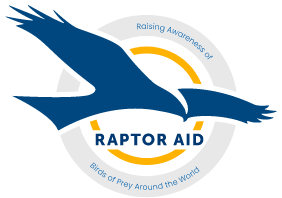BoP in Captivity - Public Displays
Public displays can take place anywhere in the UK from small village fêtes, shopping centres and car boot sales to the biggest country fairs and the standards are just as diverse. One major change recently in the UK was the introduction of the Animal Activities Licence 2018 which replaces the old outdated Performing Animals Licence – it is much more stringent in its guidelines but is to early to make a judgment on its workability.
You might have thought that a traveling bird of prey collection is included in the zoo license act and has some guidelines to follow, but sadly this is not true. Most get around needing a zoo license by not being open to the public in a permanent place. These sort of outfits might be operating as a commercial enterprise offering flying demonstrations and selling experience days or as a charitable rescue group trying to raise money for birds of prey. Whatever the outfit, some things should always be in place, despite the lack of legislation covering traveling operators.
Public liability insurance/Risk assessments
Animal Activities License
Animal transport license
Shelter for the birds including access to water and suitable perches
Barrier between the public and birds
Trained members of staff to answer questions
A good demo should be both enjoyable & educational
The Hawkboard (a non-government organisation which represent falconry and bird of prey owners) have come up with some of their own guidelines, which can be seen at the link
A grey area is the use of wild injured birds in front of the public and also organisations operating as charities and fundraising as a rescue. Identifying wild injured birds is difficult for the general public, but it should be known that certain species need an Article 10 to be on public display. This includes both captive bred and wild injured birds. The Article 10 should tie in with some form of physical identification on the bird, like a ring on the leg or a microchip. To give you an idea, any British bird of prey (regardless of origin) requires an Article 10 but here is a full list.
In recent years, there has been a rise in people showing birds of prey in various locations, trying to raise money as so-called “rescues” using birds from captive bred stock from all over the world. These setups often have donation buckets, but next time you see it just ask yourself what you are really donating to? It is not illegal to have donation buckets if you are not a registered charity (as long as you are not claiming to be a charity) but where does the money actually go? Are you donating to the upkeep of a private bird of prey collection and do they have everything mentioned above in order? They should still have the above bullet points in place.
Again, something being offered at shows and fêtes is the chance to hold a bird of prey, have your picture taken and even stroke the birds. If you think about the number of people who are going to be picking up and touching these birds, then it isn’t really the best way to display birds of prey. Birds of prey do not enjoy being stroked and it is not good for their feathers. It also gives people the wrong idea about how birds of prey should be viewed and looked after. Please, if you see this, think about the birds before you think about a photo.
At the end of the day it should be the responsibility of the people who organise the show or event to make sure people attending with birds of prey are reputable and welfare standards are high, but sadly this is not always the case and because there are no strict guidelines in place it can be very difficult to police. If you see anything you are concerned about either speak to the people in charge of the birds or event or take pictures and details of the organisation and send them to Raptor Aid.
